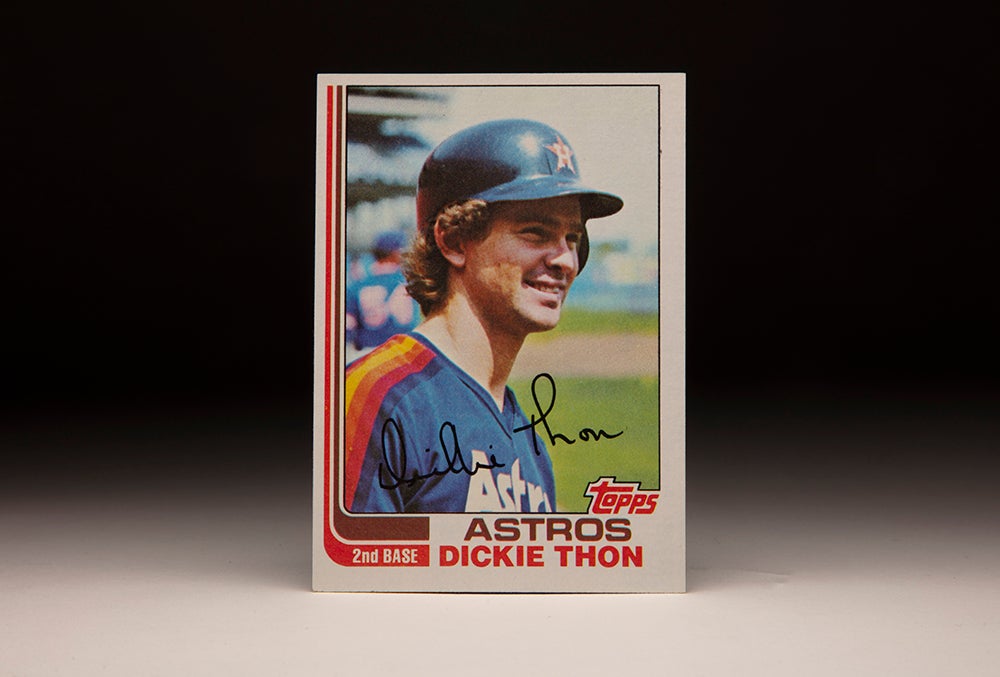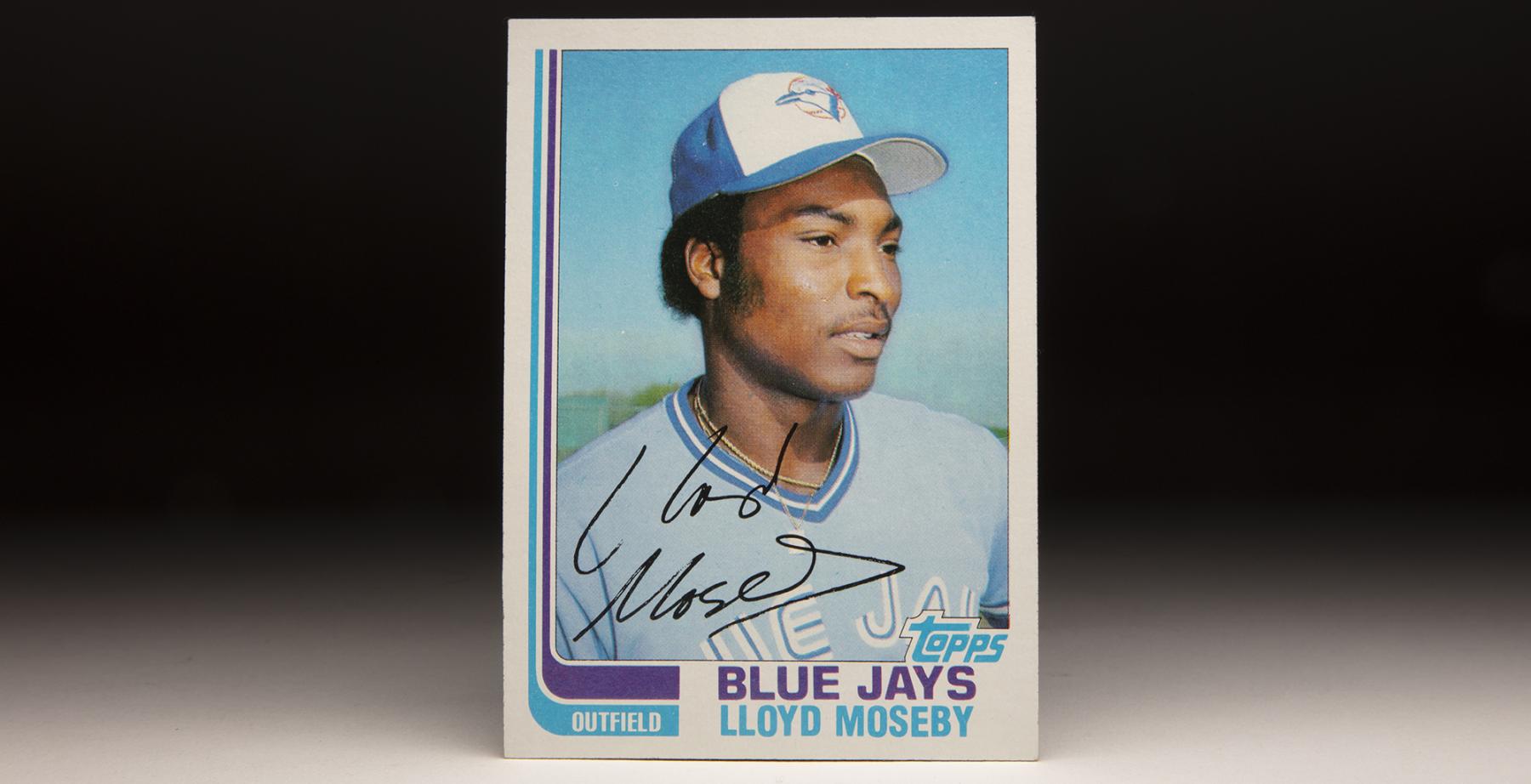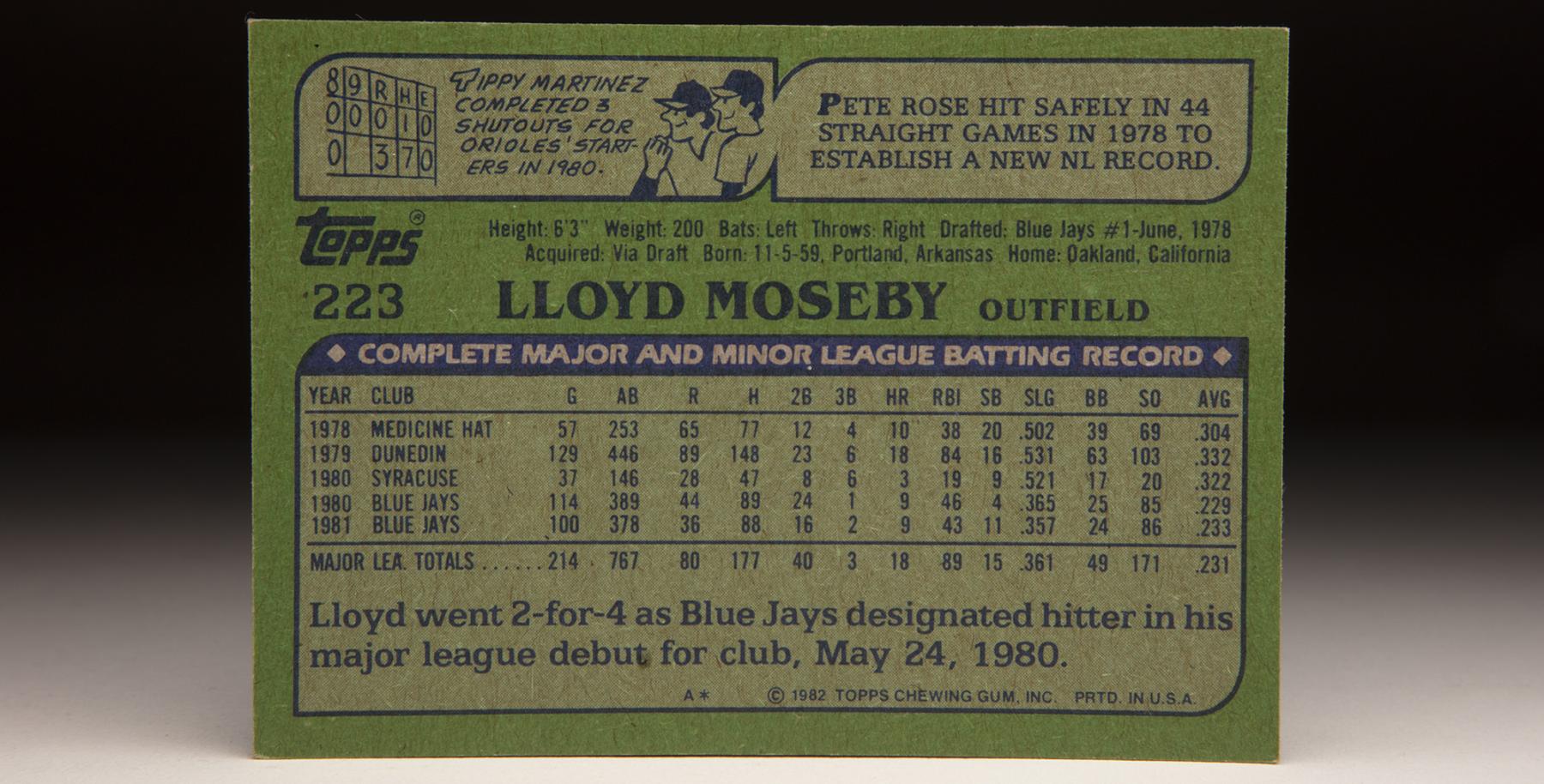- Home
- Our Stories
- #CardCorner: 1982 Topps Lloyd Moseby
#CardCorner: 1982 Topps Lloyd Moseby
Taken with a first-round draft pick following the Toronto Blue Jays inaugural season, Lloyd Moseby became the face of a club that would set standards for how to build an expansion team from scratch.
And though his big league debut at the tender age of 20 may have hindered his development, Moseby eventually evolved into the All-Star that his talents foretold when he graduated from Oakland High School.
Born Nov. 5, 1959, in Portland, Ark., Lloyd Anthony Moseby grew up in Oakland, Calif., while starring as a basketball player. He began to focus on baseball during high school – he was cut from several youth league baseball teams – and hit 15 homers in a 15-game stretch as a high school senior.
Official Hall of Fame Apparel
Proceeds from online store purchases help support our mission to preserve baseball history. Thank you!
Be A Part of Something Greater
There are a few ways our supporters stay involved, from membership and mission support to golf and donor experiences. The greatest moments in baseball history can’t be preserved without your help. Join us today.
“When I was little, I wasn’t a baseball player at all,” Moseby told the St. Petersburg Times. “All I wanted to do was play basketball. But baseball was something that grew on me.”
Nicknamed “Shaker” for his ability to fake out defenders on the hardwood, Moseby committed to play college hoops with the St. Mary’s Gaels but changed his mind when the Blue Jays – who held the second overall pick in the 1978 MLB Draft by virtue of their 54-107 record in their inaugural season the year before – selected him between two Arizona State standouts.
The Braves took Bob Horner with the No. 1 overall pick in 1978, and Sun Devils teammate Hubie Brooks went No. 3 to the Mets. A first baseman in high school, Moseby – with his athletic 6-foot-3 build – possessed the long-range upside the Blue Jays coveted.
“You gotta see this kid hit to believe it,” Blue Jays coach Al Widmar told the United Press International.
Quickly agreeing to a contract, Moseby was sent to Medicine Hat of the Pioneer League, where he had nine hits in his first 12 at-bats.
“This couldn’t have worked out better,” Moseby told the Calgary Herald. “I’d never get a better chance than with an expansion team like Toronto. With the Jays, it’s conceivable I can make it (to the big leagues) a little faster.”
Moseby wrapped up his first pro season with a .304 batting average, 10 home runs and 20 steals in 67 games. Playing the Class A Dunedin in the Florida State League in 1979, Moseby hit .332 with 18 homers, 84 RBI and 16 steals in 129 games.
Invited to the Blue Jays’ Spring Training camp in 1980 after playing winter ball in Venezuela, Moseby nearly made the Opening Day roster before being sent to Triple-A Syracuse. Almost five years younger on average than his fellow International League players, Moseby still hit .322 with a .394 on-base percentage over 37 games before the Blue Jays had seen enough.
Moseby made his big league debut on May 24, 1980, recording two hits in four at-bats against the Yankees after being recalled from Triple-A. He went 3-for-5 with a homer and four RBI the next day and became the talk of baseball in his first week on the scene.
“He’s the kind of ballplayer who can almost carry a whole ballclub,” Blue Jays coach Denis Menke, who managed Moseby at Class A Dunedin in 1979, told UPI.
Moseby cooled off after his hot start as the league adjusted to him. But he still finished the season with nine homers, 46 RBI and a .229 batting average in 114 games – mostly as the Blue Jays’ right fielder.
“There isn’t the slightest question in my mind he’s going to be one helluva ballplayer,” Blue Jays manager Bobby Mattick told UPI soon after Moseby’s big league debut in 1980.
Playing right field, Moseby drew comparisons to Pirates All-Star Dave Parker, who then was considered perhaps the best all-around player in the game.
“I’m flattered even to be mentioned with Dave Parker,” Moseby told UPI in 1980 soon after he was called up to Toronto for the first time. “I have to tell you the truth, though. I certainly am not patterning myself after him consciously. All I’m trying to be is Lloyd Moseby.”
After returning to Venezuela for more winter ball seasoning after his rookie year, Moseby won Toronto’s starting center field job for 1981. He played in 100 of the Blue Jays’ 107 games during that strike-shortened season, hitting .233 with nine homers and 43 RBI in a near-repeat performance of his rookie year. He led the team in runs (36), hits (88) and RBI.
But 1982 proved to be another learning season as Moseby hit .236 with nine homers and 52 RBI in 147 games. Some scouts began to question if he would ever fulfill his potential.
“It takes time,” Blue Jays manager Bobby Cox told the Buffalo News. “You gotta have patience.
“I’m sticking with him.”
Cox’s patience paid off in 1983. Moseby, who opted not to play winter ball following the 1982 campaign in an effort to build up his strength, came out of the gate strong and was hitting .304 at the end of April. After a May slump, Moseby pushed his batting average back over .300 in July and stayed consistent for the rest of the season – winning American League Player of the Month honors for August after hitting .351 with 47 hits, seven homers and 25 RBI.
He finished the year hitting .315 with 104 runs scored, 18 homers, 84 RBI and 27 stolen bases.
Moseby finished 14th in the AL Most Valuable Player voting and won a Silver Slugger Award as the Blue Jays finished 89-73 – the first winning record in franchise history. Following the season, the Blue Jays signed Moseby to a five-year contract.
“I always thought he’d come along,” Blue Jays general manager Pat Gillick told the Rochester Democrat and Chronicle. “Back when we drafted him in 1978, even if Atlanta had not taken Bob Horner, we still would have taken Moseby second. He was the better athlete.”
Moseby continued his excellent all-around play in 1984, leading the AL in triples with 15 while batting .280 with 18 homers, 97 runs scored, 92 RBI and 39 steals – drawing 78 walks and leading all MLB center fielders with 470 putouts. His 7.3 WAR ranked third behind only Cal Ripken Jr. (10.0) and Blue Jays teammate Dave Stieb (7.9).
In 1985, the Blue Jays qualified for the postseason for the first time, winning the AL East as Moseby hit .259 with 18 homers, 92 runs scored, 70 RBI and 37 steals. Batting out of the No. 2 spot in the order most the year, Moseby set the table for sluggers Jeff Burroughs and George Bell while playing his usual 145-plus games in center field.
In the postseason, Moseby played the hero in Game 2 of the ALCS vs. the Royals. With Kansas City leading 5-4 heading to the bottom of the 10th, Moseby singled off relief ace Dan Quisenberry to drive home Tony Fernández with the tying run before scoring on Al Oliver’s single to give Toronto a 6-5 win.
In Game 4, Moseby doubled in the top of the ninth to score Dámaso García and tie the game at 1, then scored on an Oliver two-run double to help the Blue Jays win 3-1 and take a 3-games-to-1 in that best-of-7 series.
But the Royals won each of the next three games – Moseby went 3-for-4 in Game 6 – to advance to the World Series.
“If we can’t win one out of two games in our own ballpark,” Moseby told Gannett News Service when the series headed back to Toronto for Games 6 and 7, “then we don’t deserve to go to the World Series.”
But with a young lineup that featured outfielders Moseby, Bell and Jesse Barfield – along with Fernández at short – most observers felt the Blue Jays had the chance to win multiple World Series titles in the next decade. That would happen – but Moseby would not be there for it.
In 1986, Moseby would earn his first and only All-Star Game selection but Toronto would finish fourth under new manager Jimy Williams. Moseby hit .253 with 21 homers, 86 RBI and 32 steals.
Moseby and the team would be better in 1987, with setting career highs in home runs (26), RBI (96) and runs scored (106) while tying his career best with 39 steals. The Blue Jays led the AL East for virtually the entire season before faltering down the stretch. Toronto lost its final seven games, including three to Detroit as the Tigers rallied to win the division.
In 1988, Moseby and the team – after agreeing to extend his contract through the 1989 season – feuded in Spring Training over the Blue Jays’ wish to move Moseby to left field.
“If they want to move me,” Moseby told Scripps Howard News Service, “they can move me to Egypt, they can move me to Japan…but not to left field.”
Moseby did start the year in left as heralded rookie Sil Campusano played center, but Moseby soon moved back to his old position as Campusano failed to hit. But trade rumors swirled around Moseby for much of the season and he finished the year hitting .239 with 10 home runs and 42 RBI in 128 games – the first time he failed to appear in at least 150 contests since 1982. He did still 31 bases, however, extending his string of 30-or-more steal campaigns to five.
No Blue Jays player has ever had as many.
In 1989, Toronto returned to the top of the AL East with Moseby still in center field. But Moseby appeared to be slowing down at age 29, hitting .221 with 11 homers, 43 RBI and 24 steals in 135 games. Moseby had a strong ALCS vs. the Athletics, hitting .313 with a .476 on-base percentage – but Oakland advanced to the World Series in five games. Moseby homered off Dave Stewart in the eighth inning of Game 5. It would be his last plate appearance as a Blue Jays player.
Following the season, Moseby became a free agent. On Dec. 7, 1989, he agreed to a two-year deal with the Tigers worth $3 million.
“Lloyd Moseby brings us several plusses,” Tigers general manager Bill Lajoie told the Canadian Press. “He’s a proven center fielder, he gives us more left-handed power and he’s been a base-stealing threat throughout his career.”
Moseby left the Blue Jays as the franchise leader in hits (1,319), doubles (242), triples (60) and stolen bases (255). He remains the team’s all-time leader in steals.
Moseby moved into his customary center field role with the Tigers, hitting .248 with 14 homers, 51 RBI and 17 steals in 122 games. But he was moved to left field late in the year as prospect Milt Cuyler made his debut, and in 1991 Moseby became a platoon player while battling injuries and hit .262 over 74 games.
“Playing in Detroit, I understand now what it was that I had here,” Moseby told the National Post on a road trip to Toronto. “The fans at Exhibition Stadium, that was a love affair. The Blue Jays played baseball for them. In Detroit, you work for the fans a lot more. No complaints, I’m making good money, but it’s like a job.”
With his contract up after the season, Moseby signed with the Yomiuri Giants in the spring of 1992 when he found no suitable big league offers. Moseby hit .306 with 25 homers in 96 games in Tokyo that season, then appeared in 37 games a year later before ending his career.
Meanwhile, the Blue Jays won the World Series title in 1992 and 1993 – bringing baseball’s championship to Canada for the first time.
Moseby ended his 12-year big league career with a .257 batting average, 1,494 hits, 169 homers, 737 RBI and 280 steals. He served as the Blue Jays’ first base coach for a time in the late 1990s and continued to make his home in Canada.
But for Moseby, there would always be a bittersweet element to his days with the Blue Jays.
“We never did the things as a team we were supposed to do,” Moseby told the National Post during his final season in the big leagues. “We were supposed to win the World Series twice in my time in Toronto. Twice easily. Definitely twice. That’s the saddest thing in my career, that we didn’t do it here.”
Craig Muder is the director of communications for the National Baseball Hall of Fame and Museum
Related Stories

#CardCorner: 1982 Topps Tony Peña
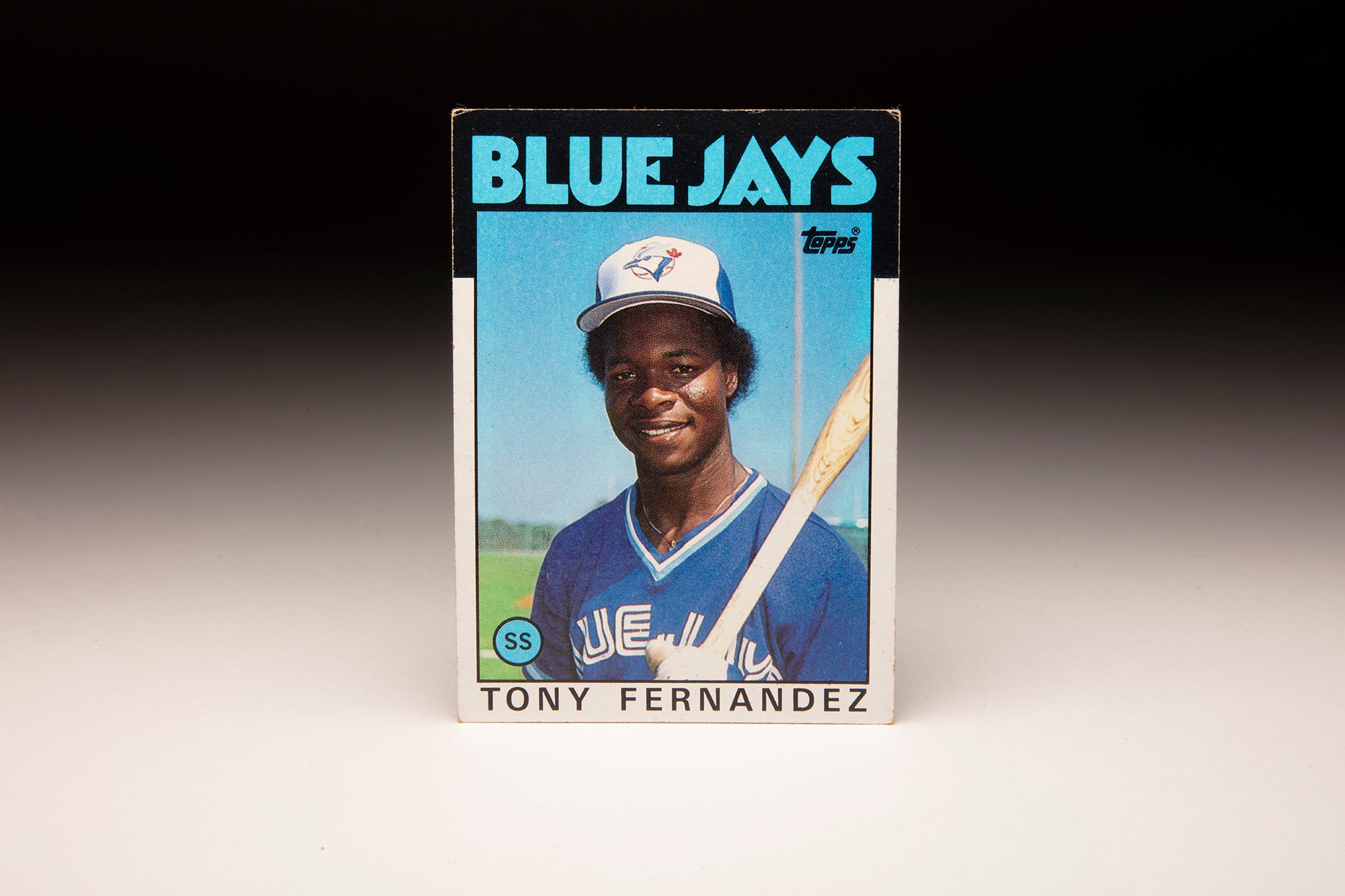
#CardCorner: 1986 Topps Tony Fernández
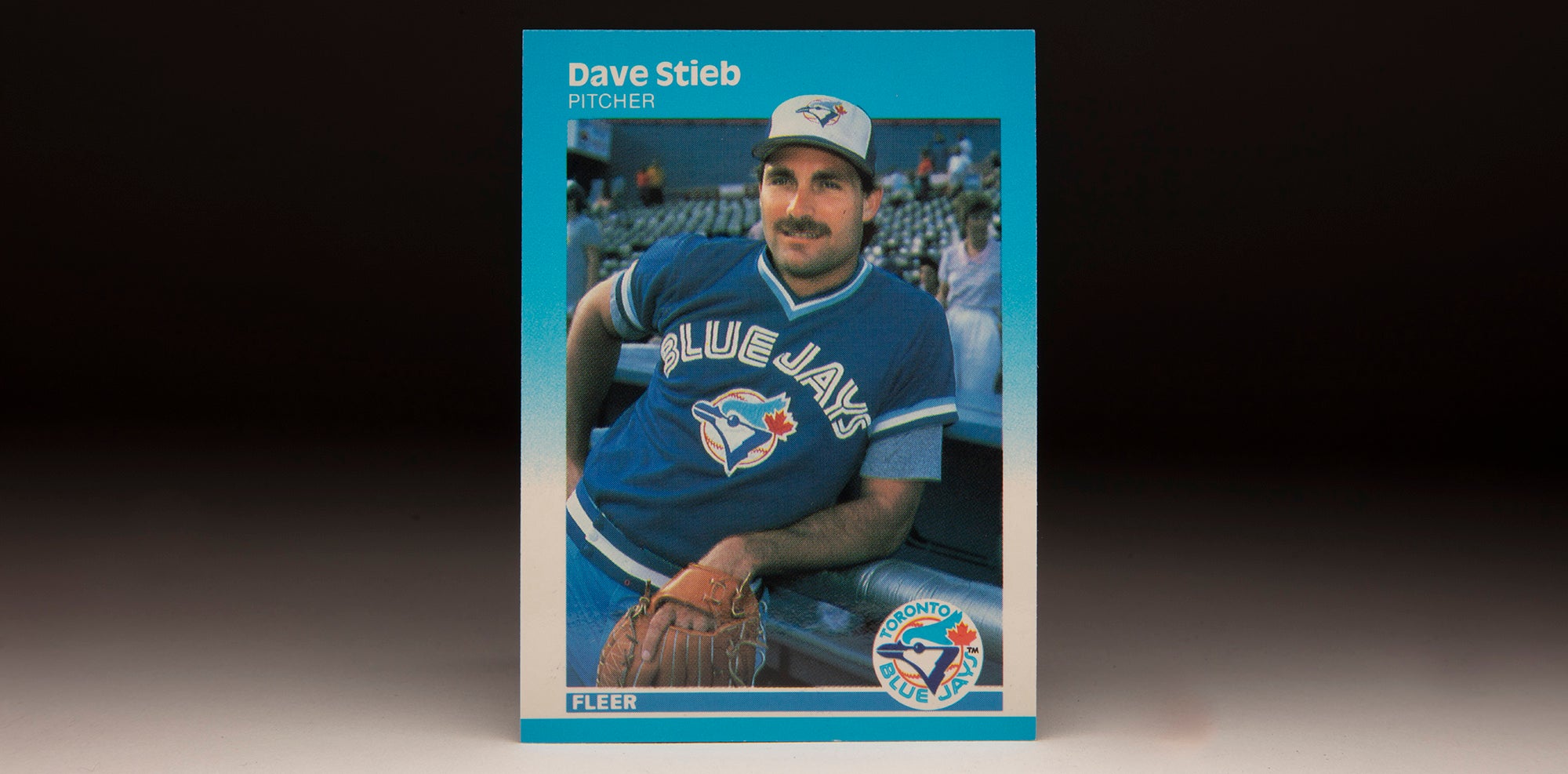
#CardCorner: 1987 Fleer Dave Stieb
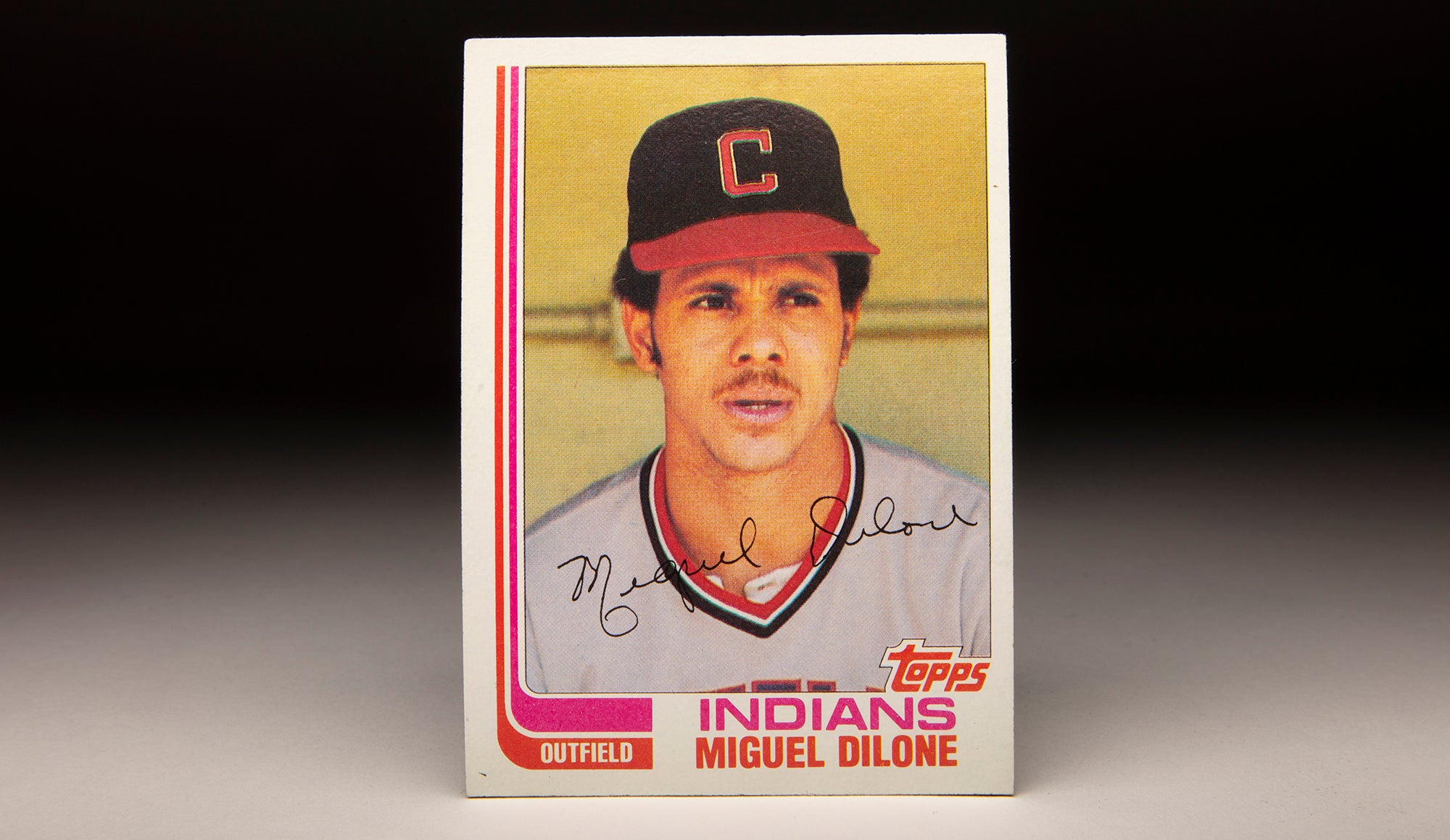
#CardCorner: 1982 Topps Miguel Dilone
